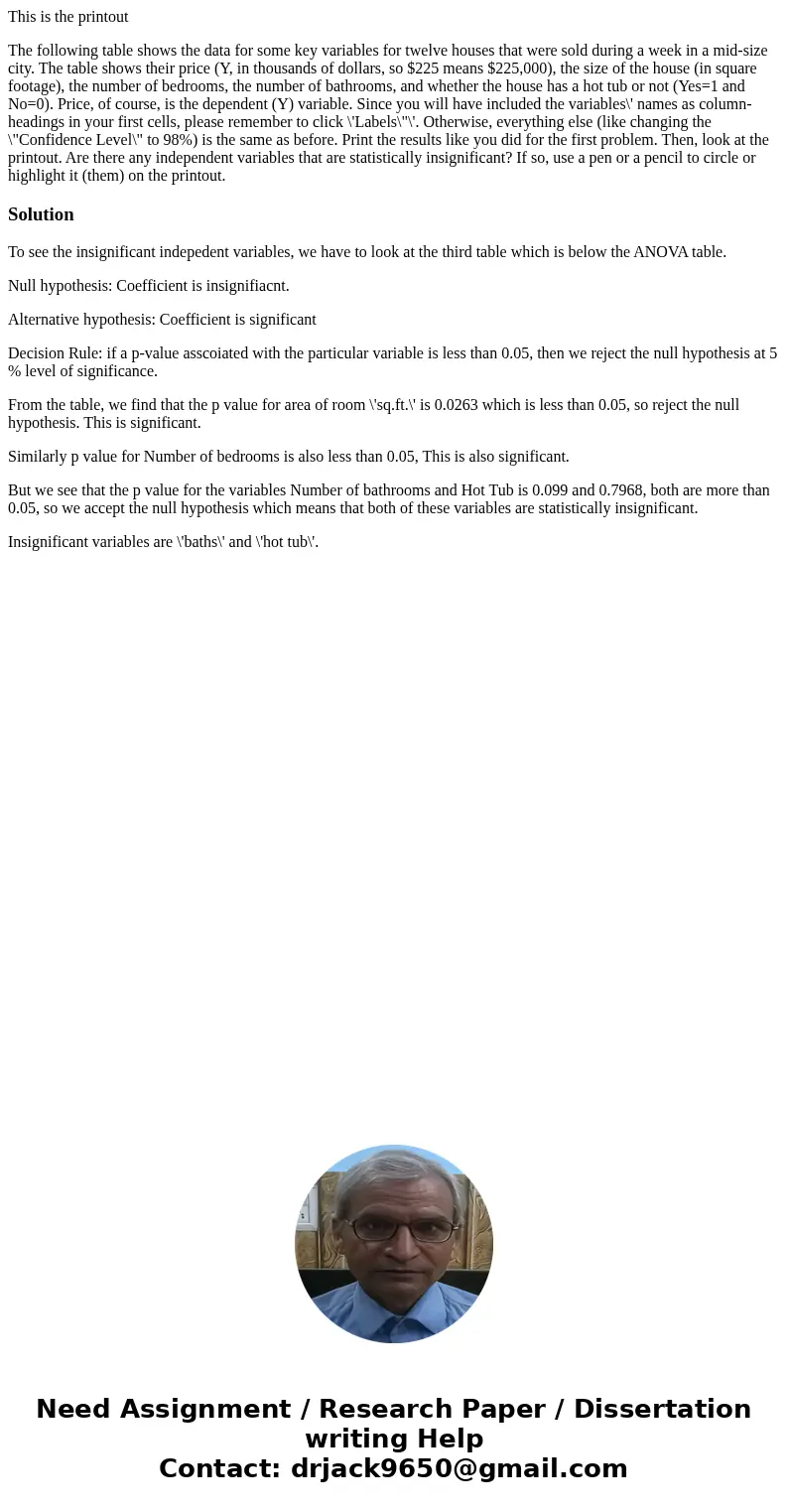This is the printout The following table shows the data for
This is the printout
The following table shows the data for some key variables for twelve houses that were sold during a week in a mid-size city. The table shows their price (Y, in thousands of dollars, so $225 means $225,000), the size of the house (in square footage), the number of bedrooms, the number of bathrooms, and whether the house has a hot tub or not (Yes=1 and No=0). Price, of course, is the dependent (Y) variable. Since you will have included the variables\' names as column-headings in your first cells, please remember to click \'Labels\"\'. Otherwise, everything else (like changing the \"Confidence Level\" to 98%) is the same as before. Print the results like you did for the first problem. Then, look at the printout. Are there any independent variables that are statistically insignificant? If so, use a pen or a pencil to circle or highlight it (them) on the printout.Solution
To see the insignificant indepedent variables, we have to look at the third table which is below the ANOVA table.
Null hypothesis: Coefficient is insignifiacnt.
Alternative hypothesis: Coefficient is significant
Decision Rule: if a p-value asscoiated with the particular variable is less than 0.05, then we reject the null hypothesis at 5 % level of significance.
From the table, we find that the p value for area of room \'sq.ft.\' is 0.0263 which is less than 0.05, so reject the null hypothesis. This is significant.
Similarly p value for Number of bedrooms is also less than 0.05, This is also significant.
But we see that the p value for the variables Number of bathrooms and Hot Tub is 0.099 and 0.7968, both are more than 0.05, so we accept the null hypothesis which means that both of these variables are statistically insignificant.
Insignificant variables are \'baths\' and \'hot tub\'.

 Homework Sourse
Homework Sourse